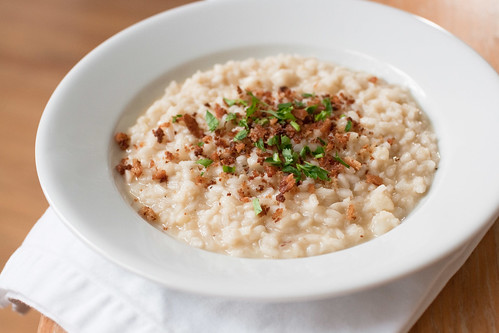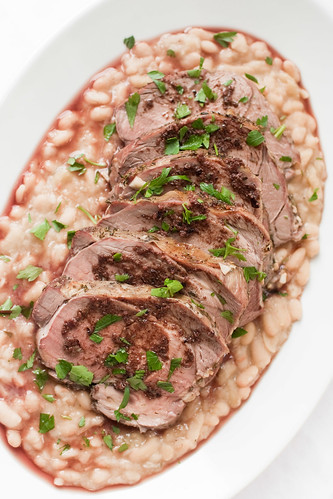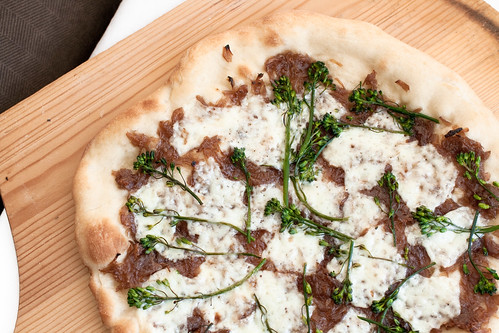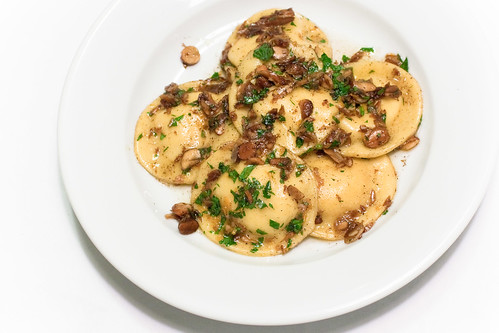Our week 11 meal was middle eastern themed. Two of the dishes on our todo list, from Jamie Oliver's book Jamie at Home, looked like they'd pair well together, so we decided to do both. The first dish was fava bean fritters, which were similar to falafel but made from fava beans. The second was lamb kofta kebabs, a wrap of spiced, grilled lamb.
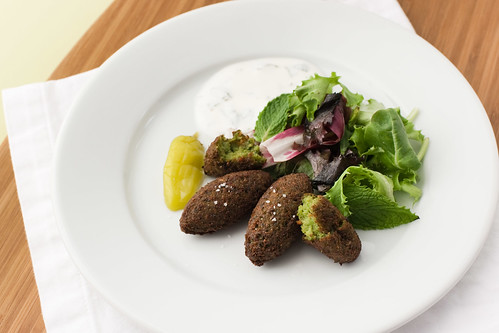
For the fritters, I picked up the fava beans at the Thursday farmer's market near work. The recipe came together relatively easily. Peeling fava beans can be labor intensive, but with Emily's help it went quickly. Emily also put together the yogurt sauce and formed the quenelles. They fried up nicely. The outside was nice and crisp, but they were softer and creamier inside than is typical of falafel. I don't know if this was intended, but the contrast in textures was nice.

The second course was the lamb kofta. Ground lamb is mixed with thyme, cayenne, cumin, and sumac, formed onto skewers and grilled. I was looking forward to this dish because I'd never worked with sumac before, although I've had it in dishes at Loló, a local mexican-turkish restaurant. I only made a couple of minor tweaks to the recipe: I substituted almonds for the pistachios (due to allergies), and I used the lemon/mint yogurt from the fava recipe rather than straight yogurt. The resulting dish was quite good. We want to make it again soon but haven't made time yet.


